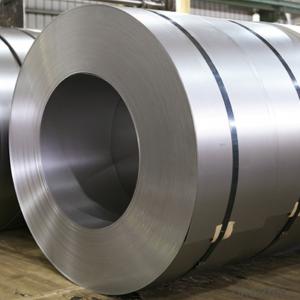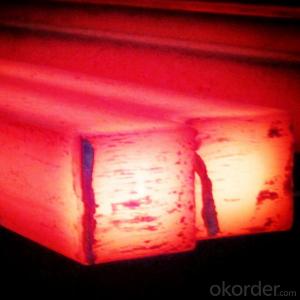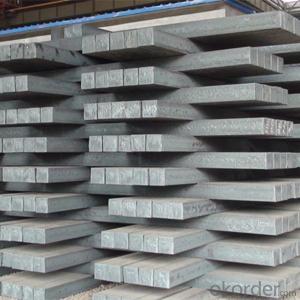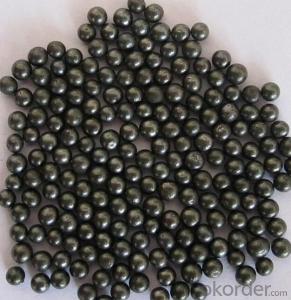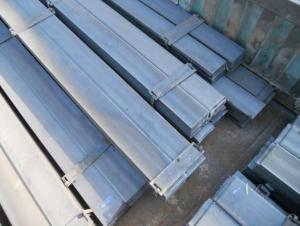Supply For Silicon Steel and Electric Steel
- Loading Port:
- Shanghai
- Payment Terms:
- TT OR LC
- Min Order Qty:
- 50 kg
- Supply Capability:
- 4000 kg/month
OKorder Service Pledge
OKorder Financial Service
You Might Also Like
1.Description:
Silicon steel containing silicon content is 0.5 to 4.5% of very low carbon ferrosilicon alloy, due to the different structure and use is divided into non oriented silicon steel and grain oriented silicon steel. Silicon steel is mainly used for motors, generators, compressors, motors and transformers core, is the electric, home appliances and other industries indispensable raw materials products.
Silicon steel sheets cold rolling, hot-rolled two, the use of more cold-rolled silicon steel sheet. Cold-rolled silicon steel sheet along the rolling direction with excellent magnetic properties, not only in the strong magnetic field has high saturation magnetic flux density and low loss, but also have good magnetic properties (initial permeability) in the weak magnetic field. Because of the cold rolling process, the impurity content of the steel sheet is decreased, and the coarse grain is caused, and the magnetic permeability is increased and the hysteresis loss decreases.
2.Product characteristic:
The main requirements for the silicon steel properties are:
1, low iron loss, this is the most important quality index of silicon steel sheet. All core loss grades according to the lower grades, the iron loss, the higher.
2, a strong magnetic field of magnetic induction (magnetic), which makes the motor and transformer core volume and weight, saving silicon steel, copper and insulating materials, etc..
3, the surface is smooth, flat and thickness uniformity, can improve the core fill factor.
4, good film, for manufacturing micro, small motor is more important.
5, the adhesion and welding of the surface insulation film is good, can prevent and improve the film.
3.Specifications :
Material: B50A470
0.5*1200*C, 0.5*1000*C
4.Reference picture:
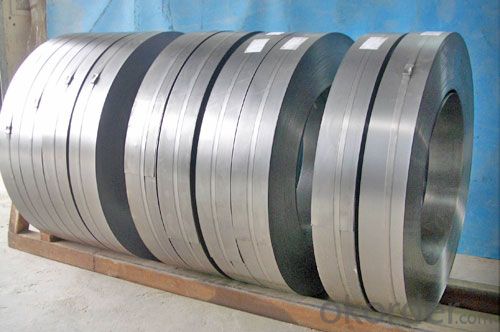
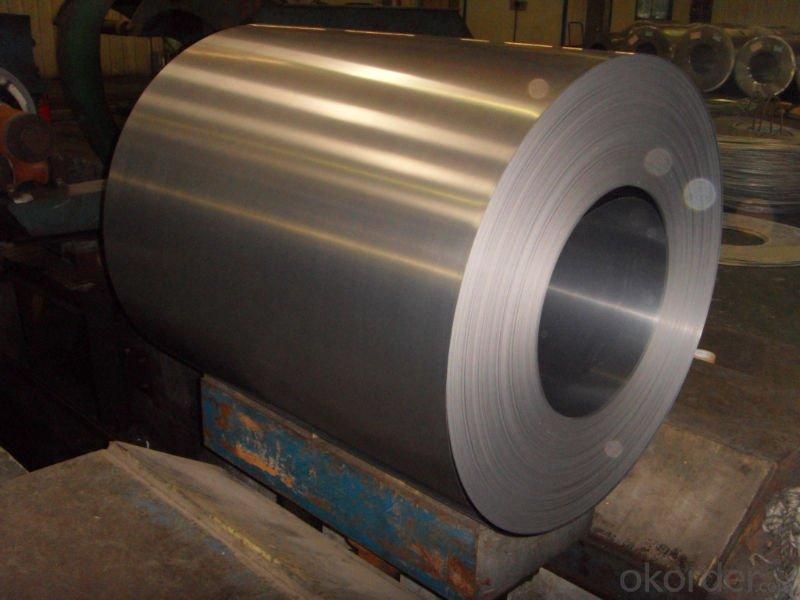
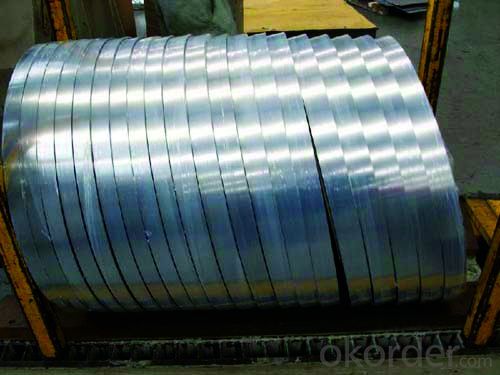
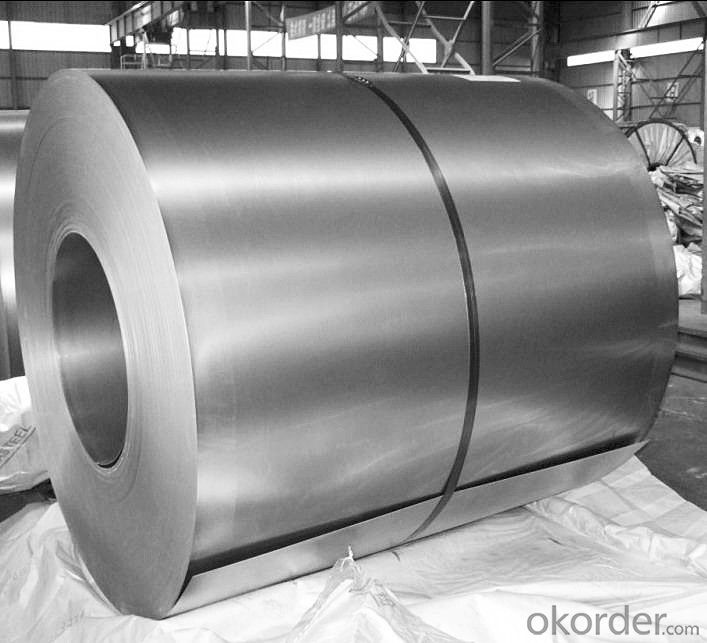
Material: B50A470
Origin / manufacturer :Shanghai Baoshan Iron & Steel Co.
Stock:Jiayin Stock
Specifications :0.5*1200*C, 0.5*1000*C
- Q:What are the factors influencing the magnetic losses in silicon steel under different core sizes?
- The magnetic losses in silicon steel under different core sizes can be influenced by several factors. Firstly, the size of the core itself is an important factor to consider. When the core size increases, the magnetic losses also tend to increase. This is because a larger core contains a greater volume of material, leading to higher eddy current losses. Eddy currents are induced in the core due to the changing magnetic field, resulting in energy losses in the form of heat. Therefore, a larger core size results in higher eddy current losses and consequently higher magnetic losses. Another factor that affects magnetic losses is the thickness of the steel laminations used in the core. Thicker laminations generally have higher magnetic losses compared to thinner laminations. This is because thicker laminations offer less resistance to the flow of eddy currents, resulting in increased energy losses. On the other hand, thinner laminations increase the resistance to eddy current flow, thereby reducing magnetic losses. The quality of the silicon steel used in the core also plays a significant role in determining magnetic losses. Silicon steel is specifically designed to have low magnetic losses by incorporating silicon in its composition to improve its magnetic properties. However, the quality of the silicon steel can vary depending on factors such as impurities or manufacturing processes. Lower-quality silicon steel may have higher magnetic losses compared to higher-quality silicon steel. Additionally, the frequency of the alternating current flowing through the core can impact magnetic losses. At higher frequencies, the magnetic losses tend to increase due to the skin effect. The skin effect causes the alternating current to concentrate near the surface of the core, resulting in increased eddy current losses. Lastly, the design of the core, including its shape and geometry, can influence magnetic losses. Different core shapes and geometries can have varying effects on the distribution of magnetic flux and eddy currents, thereby affecting the overall magnetic losses. In conclusion, the factors that influence magnetic losses in silicon steel under different core sizes include the core size, thickness of the steel laminations, quality of the silicon steel, frequency of the alternating current, and the design of the core. Understanding and considering these factors is essential for optimizing the performance and efficiency of magnetic devices that utilize silicon steel cores.
- Q:Who has the core data of silicon steel sheet? I want to know the permeability of silicon steel. How much is it? Thank you
- Silicon steel permeability: according to different types of silicon steel sheet, the permeability is different. Brands do not use, the difference is greater. At present 50W1300 can arrive 1.74T or so, 50W800 brand can arrive 1.72T or so, 50SW600 can arrive 1.69T or so. If high magnetic sense, generally increased about 0.05T.
- Q:What is the role of grain orientation in silicon steel?
- The role of grain orientation in silicon steel is essential for optimizing its magnetic properties and enhancing its performance in electrical applications. Silicon steel, also known as electrical steel or transformer steel, is a specialized type of steel alloyed with silicon to improve its magnetic properties. Grain orientation refers to the arrangement and alignment of the crystal grains within the steel. The crystal grains in silicon steel are elongated and aligned in a specific direction, generally parallel to the rolling direction during manufacturing. This controlled grain orientation plays a crucial role in determining the magnetic behavior and efficiency of the material. One of the key properties of silicon steel is its high electrical resistivity, which reduces the energy losses that occur during the flow of electric current. Grain orientation significantly influences the electrical resistivity of the material. By aligning the grains along a specific direction, the material's resistivity can be optimized, reducing the energy losses caused by electrical currents. Moreover, grain orientation also affects the magnetic properties of silicon steel, particularly its permeability and coercivity. Permeability refers to the material's ability to allow the flow of magnetic flux, while coercivity measures its resistance to changes in magnetization. By aligning the grains in a specific direction, the permeability and coercivity can be enhanced, resulting in improved magnetic performance. The controlled grain orientation in silicon steel also reduces the occurrence of magnetic domain walls, which are interfaces between regions with different magnetization orientations. Minimizing the presence of domain walls is significant as it lowers the energy losses due to hysteresis, where the magnetic field applied to the material causes it to lag in magnetization. This contributes to the overall efficiency of silicon steel in electrical applications. In summary, grain orientation in silicon steel plays a vital role in optimizing its magnetic properties, including electrical resistivity, permeability, and coercivity. By aligning the crystal grains in a specific direction, the material's performance can be enhanced, reducing energy losses and improving its efficiency in electrical applications such as transformers, motors, and generators.
- Q:Can silicon steel be used in electric vehicles?
- Indeed, electric vehicles can utilize silicon steel effectively. Silicon steel, also referred to as electrical steel, is a specific alloy of steel designed with the intention of minimizing magnetic losses and maximizing electrical resistivity. These characteristics render it particularly appropriate for applications in electrical devices and power transformers, where it is commonly employed. In electric vehicles, silicon steel can be employed in a multitude of components, including electric motors and generators. Typically, the core of an electric motor is constructed using laminated silicon steel sheets to mitigate energy losses caused by magnetic hysteresis and eddy currents. Through the use of silicon steel, electric vehicles can attain heightened energy efficiency and enhanced performance. Moreover, silicon steel is also employed in the fabrication of transformers and inductors within the charging infrastructure of electric vehicles. These components play a vital role in power distribution and charging systems, and the utilization of silicon steel helps minimize energy losses and ensure efficient power transfer. All in all, the exceptional properties of silicon steel render it a fitting material for numerous electrical components in electric vehicles. Its low magnetic losses and high electrical resistivity contribute to heightened efficiency, reduced energy consumption, and enhanced performance in such vehicles.
- Q:What are the different tests conducted to evaluate the quality of silicon steel?
- The different tests conducted to evaluate the quality of silicon steel include magnetic testing, mechanical testing, chemical analysis, and electrical testing. Magnetic testing evaluates the magnetic properties of the steel, such as magnetic induction and hysteresis loss, which are important for electrical applications. Mechanical testing assesses the steel's strength, ductility, and hardness, ensuring it can withstand the required mechanical stresses. Chemical analysis determines the composition of the steel, including silicon content, as it affects its magnetic and electrical properties. Electrical testing measures the steel's resistivity, conductivity, and core losses, providing important information for transformer and motor applications.
- Q:What are the factors affecting the annealing process of silicon steel?
- There are several factors that can affect the annealing process of silicon steel. Firstly, the temperature at which the annealing process is carried out is crucial. Silicon steel typically requires a high annealing temperature, usually around 1100 to 1200 degrees Celsius, in order to achieve the desired grain growth and stress relief. The temperature needs to be carefully controlled to ensure that the material is not overheated or underheated, as this can lead to poor annealing results. The annealing time is another factor that affects the process. The duration of the annealing process should be optimized to allow for the necessary diffusion of atoms and recrystallization of the material. Insufficient annealing time may result in incomplete grain growth and inadequate stress relief, while excessive annealing time can lead to grain growth beyond the desired level, resulting in reduced magnetic properties. The cooling rate after annealing is also important. Slow cooling rates are generally preferred for silicon steel, as rapid cooling can lead to the formation of unwanted phases and result in increased hardness and brittleness. A controlled and gradual cooling process allows for the formation of desirable microstructures, such as a fine-grained structure with good magnetic properties. The composition of the silicon steel also plays a role in the annealing process. Silicon is added to steel to improve its electrical and magnetic properties, but the silicon content needs to be carefully balanced. An appropriate silicon content can promote grain growth and enhance magnetic properties during annealing. However, excessive silicon content can lead to the formation of undesirable phases and reduce the overall performance of the material. Lastly, the presence of impurities and the cleanliness of the material can affect the annealing process. Impurities can act as nucleation sites for new phases and disrupt the desired grain growth. Therefore, it is essential to ensure that the silicon steel is properly cleaned and free from any contaminants before the annealing process. Overall, the temperature, annealing time, cooling rate, composition, and cleanliness of the silicon steel are all critical factors that need to be considered and controlled to achieve optimal annealing results.
- Q:What is the significance of magnetic saturation in silicon steel?
- The significance of magnetic saturation in silicon steel is that it allows the material to efficiently store and transmit magnetic energy. When silicon steel reaches its magnetic saturation point, it means that it has reached its maximum magnetic flux density and can no longer be magnetized further. This property is crucial in applications such as transformers and electric motors, where the ability to store and transmit magnetic energy efficiently is essential for their proper functioning.
- Q:What are the factors affecting the electrical conductivity of silicon steel?
- There are several factors that affect the electrical conductivity of silicon steel. 1. Silicon content: Silicon steel is alloyed with silicon to enhance its electrical conductivity. The higher the silicon content, the higher the electrical conductivity of the material. 2. Grain size: The grain size of silicon steel also plays a role in determining its electrical conductivity. Smaller grain size leads to higher electrical conductivity as it allows for better electron flow within the material. 3. Temperature: The temperature of the silicon steel can impact its electrical conductivity. Generally, as the temperature increases, the electrical conductivity decreases due to increased thermal vibrations and scattering of electrons. 4. Impurities and alloying elements: The presence of impurities and other alloying elements in silicon steel can affect its electrical conductivity. Impurities and certain alloying elements can introduce defects or alter the crystal structure, leading to reduced electrical conductivity. 5. Magnetic field: Silicon steel is commonly used in electrical transformers and motors, where it is subjected to magnetic fields. The presence of a magnetic field can influence the electrical conductivity of silicon steel through the phenomenon of magnetic saturation, which can hinder electron flow. Overall, the electrical conductivity of silicon steel is determined by a combination of factors such as silicon content, grain size, temperature, impurities, alloying elements, and the presence of magnetic fields.
- Q:Can silicon steel be used in magnetic sensors for pressure sensing?
- No, silicon steel cannot be used in magnetic sensors for pressure sensing. Magnetic sensors for pressure sensing require materials with high sensitivity to magnetic fields, such as magnetoresistive materials or Hall effect sensors. Silicon steel does not possess the necessary magnetic properties for this application.
- Q:The concept of unit magnetization capacity of silicon steel sheet. What does the letter of transformer mean?
- The loss of the transformer is an important performance parameter of the transformer. On the one hand, it shows the efficiency of the transformer in operation, and on the other hand, the performance of the transformer in the design and manufacture meets the requirements. Transformer no-load loss and no-load current measurement, load loss and short-circuit impedance measurement are all routine tests of transformers.
1. Manufacturer Overview |
|
|---|---|
| Location | |
| Year Established | |
| Annual Output Value | |
| Main Markets | |
| Company Certifications | |
2. Manufacturer Certificates |
|
|---|---|
| a) Certification Name | |
| Range | |
| Reference | |
| Validity Period | |
3. Manufacturer Capability |
|
|---|---|
| a)Trade Capacity | |
| Nearest Port | |
| Export Percentage | |
| No.of Employees in Trade Department | |
| Language Spoken: | |
| b)Factory Information | |
| Factory Size: | |
| No. of Production Lines | |
| Contract Manufacturing | |
| Product Price Range | |
Send your message to us
Supply For Silicon Steel and Electric Steel
- Loading Port:
- Shanghai
- Payment Terms:
- TT OR LC
- Min Order Qty:
- 50 kg
- Supply Capability:
- 4000 kg/month
OKorder Service Pledge
OKorder Financial Service
Similar products
New products
Hot products
Hot Searches
Related keywords
